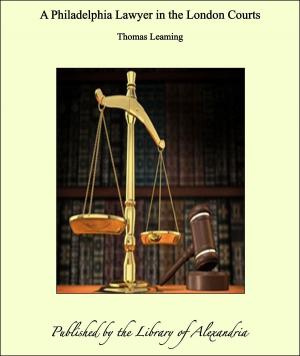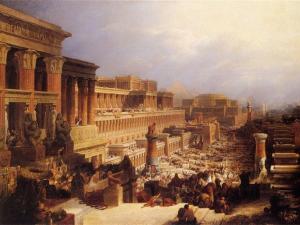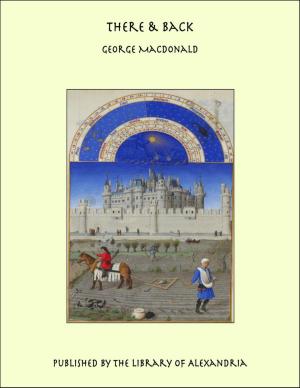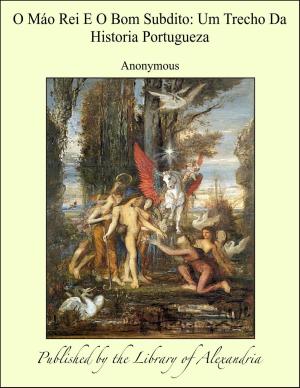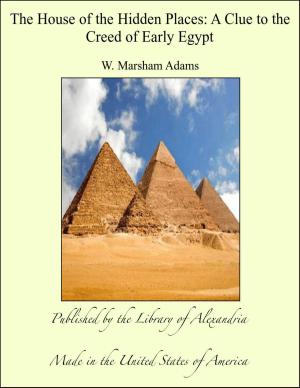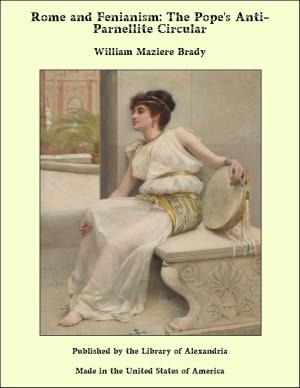The History and Romance of Crime: Italian Prisons
Nonfiction, Religion & Spirituality, New Age, History, Fiction & Literature| Author: | Arthur George Frederick Griffiths | ISBN: | 9781465608031 |
| Publisher: | Library of Alexandria | Publication: | March 8, 2015 |
| Imprint: | Language: | English |
| Author: | Arthur George Frederick Griffiths |
| ISBN: | 9781465608031 |
| Publisher: | Library of Alexandria |
| Publication: | March 8, 2015 |
| Imprint: | |
| Language: | English |
A prison of great antiquity still exists in Rome and claims precedence in date over St. Angelo. This is the Mamertine Prison, situated just below the Capitol and on the way to the Forum, in which by common tradition St. Peter was confined A.D. 62. The pillar to which he is said to have been chained is still on view, and the well of water is shown which sprang up miraculously for use in the baptism of the converted gaoler and St. Peter’s forty-seven fellow prisoners. It is an appalling place even to-day when the light of heaven creeps down the stairs leading to its subterranean recesses. These were two cellars, one below the other, and access to them was only gained through a small aperture in the roof of the upper cellar, while a similar hole in the floor led down into the cell underneath; neither had any staircase. The upper prison was twenty-seven feet long by twenty wide, the lower, elliptical in shape, was twenty feet long by ten feet wide; the height of the former was fourteen feet and of the latter seven feet. They were used originally as state prisons and lodged only persons of distinction, Jugurtha being among the number. We read in Sallust: “In the prison called Tullian when you have gone a little way down, a place on the left is found sunk twenty feet; it is surrounded by walls on all sides, and above is a room vaulted with stone, but from uncleanliness, darkness and a foul smell the appearance of it is disgusting and terrific.” Livy tells us that this prison was built by Ancus Martius, and like the Cloacae, of large uncemented stones; it was also called “Robur” and seems to be identical with the carcer lautumiarum or the “prison of the stone quarries,” suggesting that after the excavation the empty space was utilised for the construction of a prison. The quarries at Syracuse were used for the same purpose. The Mamertine prison was constantly used for the confinement of the early Christian martyrs. A chapel was eventually built above it, consecrated to St. Peter. The site occupied by the castle of St. Angelo is identical with that of the tomb, mausoleum or mole erected by the Emperor Hadrian, A.D. 135, for himself and his family. Powerful rulers from the earliestages have been greatly concerned to raise fitting receptacles for their ashes. The famous pyramids of Egypt are perhaps the most striking illustration of this vanity, and the influence was felt in other countries, especially in Rome. Many fine monuments survive, some in still recognisable ruins, some in ever green memory, perpetuating this desire. We may instance the tomb of Caius Cestius—the only specimen of a pyramid existing in Rome—which still stands near the Porta San Paolo, partly within the walls, partly without, for the Emperor Aurelian ran his wall exactly across it. It is 125 feet high, built of brick cased in white marble, now become black with age; and its chief modern interest is that the English cemetery is close at hand, the last resting place of the poets Shelley and Keats. The Cestian family was distinguished, but nothing very positive is known of this Caius except that he held office as praetor of the people in the seventh century B.C.
A prison of great antiquity still exists in Rome and claims precedence in date over St. Angelo. This is the Mamertine Prison, situated just below the Capitol and on the way to the Forum, in which by common tradition St. Peter was confined A.D. 62. The pillar to which he is said to have been chained is still on view, and the well of water is shown which sprang up miraculously for use in the baptism of the converted gaoler and St. Peter’s forty-seven fellow prisoners. It is an appalling place even to-day when the light of heaven creeps down the stairs leading to its subterranean recesses. These were two cellars, one below the other, and access to them was only gained through a small aperture in the roof of the upper cellar, while a similar hole in the floor led down into the cell underneath; neither had any staircase. The upper prison was twenty-seven feet long by twenty wide, the lower, elliptical in shape, was twenty feet long by ten feet wide; the height of the former was fourteen feet and of the latter seven feet. They were used originally as state prisons and lodged only persons of distinction, Jugurtha being among the number. We read in Sallust: “In the prison called Tullian when you have gone a little way down, a place on the left is found sunk twenty feet; it is surrounded by walls on all sides, and above is a room vaulted with stone, but from uncleanliness, darkness and a foul smell the appearance of it is disgusting and terrific.” Livy tells us that this prison was built by Ancus Martius, and like the Cloacae, of large uncemented stones; it was also called “Robur” and seems to be identical with the carcer lautumiarum or the “prison of the stone quarries,” suggesting that after the excavation the empty space was utilised for the construction of a prison. The quarries at Syracuse were used for the same purpose. The Mamertine prison was constantly used for the confinement of the early Christian martyrs. A chapel was eventually built above it, consecrated to St. Peter. The site occupied by the castle of St. Angelo is identical with that of the tomb, mausoleum or mole erected by the Emperor Hadrian, A.D. 135, for himself and his family. Powerful rulers from the earliestages have been greatly concerned to raise fitting receptacles for their ashes. The famous pyramids of Egypt are perhaps the most striking illustration of this vanity, and the influence was felt in other countries, especially in Rome. Many fine monuments survive, some in still recognisable ruins, some in ever green memory, perpetuating this desire. We may instance the tomb of Caius Cestius—the only specimen of a pyramid existing in Rome—which still stands near the Porta San Paolo, partly within the walls, partly without, for the Emperor Aurelian ran his wall exactly across it. It is 125 feet high, built of brick cased in white marble, now become black with age; and its chief modern interest is that the English cemetery is close at hand, the last resting place of the poets Shelley and Keats. The Cestian family was distinguished, but nothing very positive is known of this Caius except that he held office as praetor of the people in the seventh century B.C.

